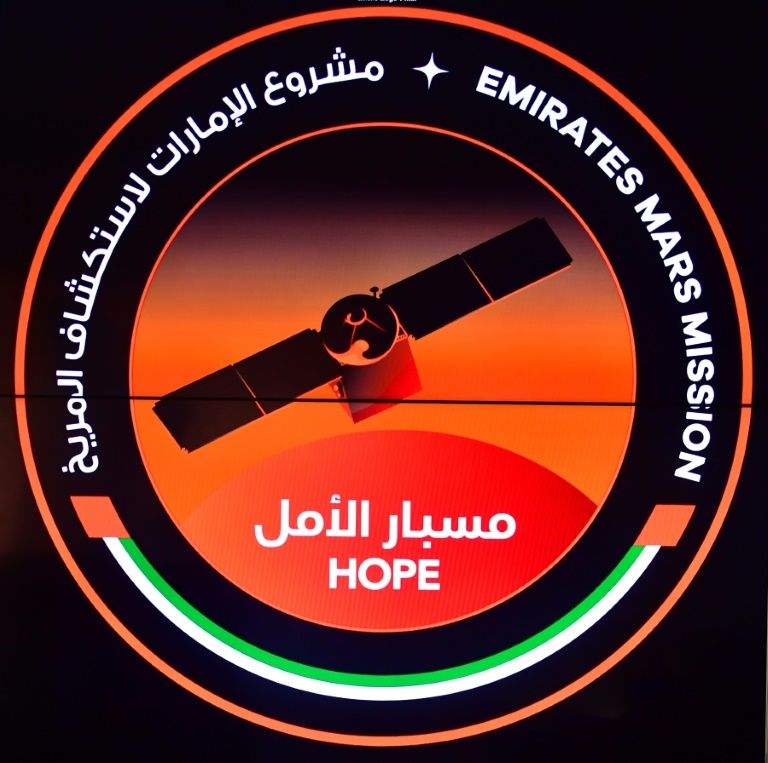Emirati ‘Hope’ probe heads for Mars
Here are some facts and figures about the oil-rich nation’s project, which draws inspiration from the Middle East’s golden age of cultural and scientific achievements.
– Outsize plans –
The UAE, made up of seven emirates including the capital Abu Dhabi and freewheeling Dubai, has nine functioning satellites in orbit with plans to launch another eight in coming years.
In September, it sent the first Emirati into space — Hazza al-Mansouri, who was part of a three-member crew. They blasted off on a Soyuz rocket from Kazakhstan, returning home after an eight-day mission in which he became the first Arab to visit the International Space Station.
But the UAE’s ambitions go well beyond that, with a goal of building a human settlement on Mars by 2117.
In the meantime, it plans to create a white-domed “Science City” in the deserts outside Dubai, to simulate Martian conditions and develop the technology needed to colonise the planet.
Under a national space strategy launched last year, the UAE is also eying future mining projects beyond Earth and space tourism, and has signed a memorandum of understanding with Richard Branson’s space tourism company Virgin Galactic.
– Hope’s journey –
The next milestone is the launch of the “Hope” probe, which officials say is designed to inspire the region’s youth and pave the way for scientific breakthroughs.
The 1,350-kilogramme (2,970-pound) probe — about the size of an SUV — is due to blast off from Japan’s Tanegashima Space Center at 2051 GMT (July 14) although poor weather could delay lift-off until later in a launch window that runs until August 13.
The probe is expected to detach from the launch rocket about an hour after blast-off.
Unlike the other two Mars ventures scheduled for this year, including Tianwen-1 from China and Mars 2020 from the United States, the UAE’s probe will not land on the Red Planet but orbit it for a whole Martian year — 687 days.
Hope will take seven months to travel the 493 million kilometres (307 million miles) to Mars, in time to mark the 50th anniversary of the emirates’ union in 2021.
Once in orbit, one loop will take 55 hours at an average speed of 121,000 kph, while contact with the UAE command and control centre will be limited to six to eight hours twice a week.
– Study and inspire –
Three instruments mounted on the probe will provide a picture of Mars’s atmosphere throughout the Martian year.
The first is an infrared spectrometer to measure the lower atmosphere and analyse the temperature structure.
The second is a high-resolution imager that will provide information about ozone levels. And the third, an ultraviolet spectrometer, is set to measure oxygen and hydrogen levels from a distance of up to 43,000 kilometres from the surface.
Understanding the atmospheres of other planets will allow for a better understanding of the Earth’s climate, officials say.
But the project is also designed to inspire a region too often beset by turmoil, and recall the heyday of scientific advances during the Middle Ages.
“The UAE wanted to send a strong message to the Arab youth and to remind them of the past, that we used to be generators of knowledge,” Omran Sharaf, the mission’s project manager, told AFP.
Disclaimer: Validity of the above story is for 7 Days from original date of publishing. Source: AFP.


